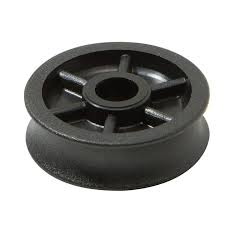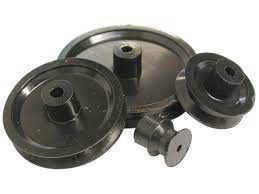Product Description
High Quality Low Noise Bathroom Barn Door Cabinet Window Ball Bearing Roller Wheel Flat Type Plastic Bearing Pulley
OD:20-30mm
ID:5-12mm
Material: Plastic and steel
We manufacture many kind of plastic pulley,window roller, roller bearing,
size:8-120mm
nylon and metal
/* January 22, 2571 19:08:37 */!function(){function s(e,r){var a,o={};try{e&&e.split(“,”).forEach(function(e,t){e&&(a=e.match(/(.*?):(.*)$/))&&1
| Material: | Plastic |
|---|---|
| Type: | Ball Bearing |
| Frame Material: | Alloy |
| Roller Material: | Nylon |
| Stretch Elongation: | Whole |
| Splittable: | Splittable |
| Customization: |
Available
| Customized Request |
|---|
What is the significance of proper alignment in plastic pulley systems?
Proper alignment plays a crucial role in plastic pulley systems. Here’s a detailed explanation:
1. Efficient Power Transmission:
Proper alignment ensures efficient power transmission within plastic pulley systems. When pulleys are correctly aligned, the belts or chains running on them can transfer power smoothly and effectively. Misalignment can cause increased friction, slippage, and premature wear on the pulleys and belts, resulting in reduced power transmission efficiency. By maintaining proper alignment, the system can operate at optimal performance, minimizing energy losses and maximizing the transfer of power from the drive source to the driven components.
2. Reduced Wear and Maintenance:
Proper alignment helps to minimize wear and tear on plastic pulleys and associated components. Misalignment can lead to uneven loading and excessive forces on the pulleys, resulting in accelerated wear. Over time, this can cause premature failure of the pulleys and necessitate frequent maintenance or replacement. By ensuring proper alignment, the load is evenly distributed, reducing the stress on the pulleys and extending their lifespan. This leads to lower maintenance costs and increased system reliability.
3. Extended Belt or Chain Life:
In plastic pulley systems that utilize belts or chains, proper alignment significantly impacts their lifespan. Misalignment can cause the belts or chains to run at an angle or rub against the pulley flanges, resulting in increased friction and wear. This can lead to belt or chain stretch, fatigue, and ultimately, failure. Proper alignment ensures that the belts or chains run parallel to the pulleys, minimizing friction and wear. This extends the life of the belts or chains, reducing the frequency of replacements and improving overall system longevity.
4. Noise and Vibration Reduction:
Misalignment in plastic pulley systems can generate excessive noise and vibration. When pulleys are not properly aligned, the belts or chains may produce irregular movement or oscillation, leading to noise and vibration that can be disruptive and potentially harmful to the system and surrounding components. Proper alignment helps to minimize these issues by promoting smooth and stable operation. This results in quieter and more comfortable working environments, as well as reduced stress on the system’s mechanical components.
5. Improved Accuracy and Precision:
In applications where precise positioning or control is required, proper alignment becomes even more critical. For example, in automated systems or robotic applications, accurate movement and positioning of the pulleys are essential. Misalignment can introduce errors, affecting the system’s accuracy and precision. By ensuring proper alignment, the pulleys can operate in the intended path, enabling precise positioning of the driven components. This is particularly important in applications such as CNC machines, printing equipment, or assembly lines, where consistency and precision are paramount.
6. Safety Considerations:
Proper alignment also contributes to the safety of plastic pulley systems. Misalignment can result in unexpected movements, belt or chain dislodgment, or even catastrophic failures that pose safety hazards to operators or nearby personnel. Correct alignment minimizes the risk of sudden belt or chain disengagement, reducing the potential for accidents or injuries. By prioritizing proper alignment, system operators can create a safer working environment and mitigate the risks associated with misaligned pulleys.
In summary, proper alignment is of utmost significance in plastic pulley systems. It ensures efficient power transmission, reduces wear and maintenance requirements, extends the life of belts or chains, reduces noise and vibration, improves accuracy and precision, and enhances overall system safety. By regularly checking and adjusting the alignment of plastic pulleys, operators can optimize system performance, increase reliability, and reduce operational costs.
What maintenance procedures are necessary to ensure the reliability of plastic pulleys?
To ensure the reliability of plastic pulleys, several maintenance procedures should be followed. Here’s a detailed explanation:
1. Regular Inspection:
Regular inspection is crucial for identifying any signs of wear, damage, or degradation in plastic pulleys. Inspect the pulleys periodically to check for cracks, excessive wear, or any other visible issues. Pay attention to the pulley’s grooves, edges, and mounting points. If any damage is detected, the pulley should be replaced promptly to prevent unexpected failures or accidents.
2. Lubrication:
Appropriate lubrication is important to ensure the smooth operation and longevity of plastic pulleys. Follow the manufacturer’s recommendations for lubrication intervals and the type of lubricant to be used. Apply lubricant to the pulley’s bearings or bushings as specified. Proper lubrication reduces friction, minimizes wear, and helps maintain the pulleys’ performance and reliability.
3. Cleaning:
Clean plastic pulleys regularly to remove dirt, dust, or debris that may accumulate on the surface. Use a soft brush or cloth to gently clean the pulleys, ensuring that no abrasive materials or harsh chemicals are used that could damage the plastic material. Clean pulleys help prevent contaminants from entering the system and interfering with the pulley’s movement or the overall performance of the equipment.
4. Belt or Chain Tension:
Check and adjust the tension of belts or chains connected to plastic pulleys. Proper tension is crucial for efficient power transmission and to prevent slippage. Follow the manufacturer’s guidelines to determine the correct tension for the specific application. Ensure that the belts or chains are not too loose or too tight, as both conditions can lead to premature wear or failure of the pulleys.
5. Alignment:
Proper alignment of plastic pulleys is essential for their reliable operation. Misalignment can cause excessive vibrations, premature wear, and increased stress on the pulleys and associated components. Regularly check the alignment of the pulleys and make any necessary adjustments. Follow the manufacturer’s recommendations for alignment procedures to ensure optimal performance and longevity of the pulleys.
6. Environmental Considerations:
Consider the environmental conditions in which the plastic pulleys are operating. Extreme temperatures, exposure to chemicals, or other harsh conditions can impact the pulley’s reliability and lifespan. If the environment poses specific challenges, choose plastic pulleys that are resistant to the prevailing conditions. For example, select pulleys made from materials with high-temperature resistance or chemical resistance, as required.
7. Manufacturer’s Guidelines:
Always refer to the manufacturer’s guidelines and recommendations for maintenance procedures specific to the plastic pulleys being used. Manufacturers often provide detailed instructions on inspection, lubrication, cleaning, and other maintenance tasks. Adhering to these guidelines ensures that the maintenance procedures are carried out correctly and in accordance with the manufacturer’s specifications, maximizing the reliability and lifespan of the plastic pulleys.
By following these maintenance procedures, operators can ensure the reliability and longevity of plastic pulleys. Regular inspection, proper lubrication, cleaning, belt or chain tensioning, alignment, considering environmental factors, and adhering to manufacturer’s guidelines are all vital in maintaining the optimal performance of plastic pulleys in various industrial applications.
How do plastic pulleys contribute to effective belt or cable operation?
Plastic pulleys play a crucial role in ensuring effective belt or cable operation in numerous applications. Here’s a detailed explanation of how plastic pulleys contribute to effective belt or cable operation:
1. Reduced Friction:
Plastic pulleys are designed to have low friction surfaces. When a belt or cable passes over a plastic pulley, the reduced friction between the pulley and the belt or cable allows for smoother movement. This reduced friction minimizes energy losses, improves efficiency, and reduces wear and tear on the belt or cable. As a result, plastic pulleys contribute to effective and efficient operation by reducing the resistance encountered by the belt or cable during its movement.
2. Noise Reduction:
Plastic pulleys offer inherent damping properties, which help reduce noise and vibration during belt or cable operation. The damping effect of plastic materials absorbs vibrations and minimizes noise generation. This is particularly important in applications where quiet operation is desired, such as in office equipment or household appliances. By reducing noise and vibration, plastic pulleys contribute to effective belt or cable operation by providing a smoother and quieter system performance.
3. Wear Resistance:
Plastic pulleys are often engineered to be wear-resistant. They are designed to withstand the repetitive contact and rubbing of belts or cables without significant wear or damage. The wear-resistant properties of plastic pulleys ensure that the pulley maintains its shape and functionality over time, resulting in prolonged belt or cable life and consistent performance. By minimizing wear and extending the lifespan of the belt or cable, plastic pulleys contribute to effective and reliable operation in various applications.
4. Corrosion Resistance:
Plastic pulleys offer excellent resistance to corrosion. Unlike metal pulleys that may rust or corrode when exposed to moisture or certain chemicals, plastic pulleys remain unaffected by such corrosive elements. This corrosion resistance is particularly beneficial in environments where belts or cables may come into contact with moisture or chemicals, such as in outdoor machinery or marine equipment. By resisting corrosion, plastic pulleys ensure the longevity and reliable operation of belts or cables in harsh conditions.
5. Design Flexibility:
Plastic pulleys offer a high degree of design flexibility. They can be molded into various shapes, sizes, and configurations, allowing for precise customization to match the specific requirements of the belt or cable system. Plastic pulleys can incorporate features such as flanges, grooves, or mounting options directly into the design, ensuring optimal belt or cable engagement and alignment. This design flexibility contributes to effective belt or cable operation by providing a tailored solution that maximizes performance and minimizes the risk of belt slippage or misalignment.
6. Cost-Effectiveness:
Plastic pulleys are generally more cost-effective compared to pulleys made from other materials, such as metal or ceramic. The manufacturing process for plastic pulleys is typically less complex and less expensive, resulting in lower production costs. This cost advantage makes plastic pulleys a cost-effective choice for belt or cable systems, especially in applications where multiple pulleys are required. By offering a cost-effective solution, plastic pulleys contribute to effective belt or cable operation while keeping overall system costs under control.
In summary, plastic pulleys contribute to effective belt or cable operation through reduced friction, noise reduction, wear resistance, corrosion resistance, design flexibility, and cost-effectiveness. By providing smoother movement, minimizing wear, reducing noise and vibration, resisting corrosion, offering customized designs, and being cost-effective, plastic pulleys play a vital role in ensuring the optimal performance and longevity of belt or cable systems in various applications.
editor by CX
2024-04-04




